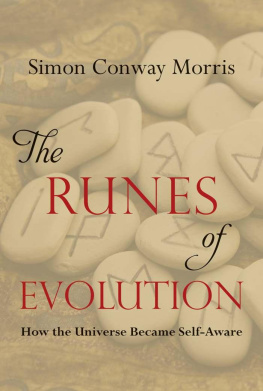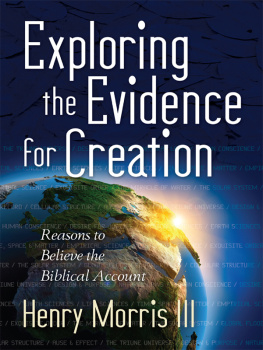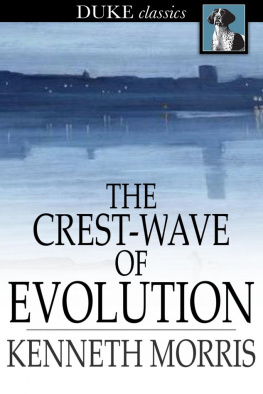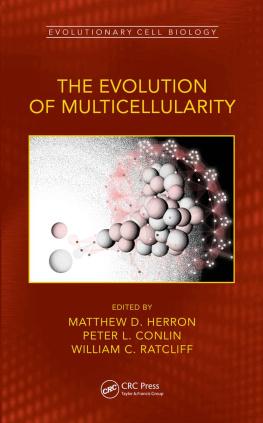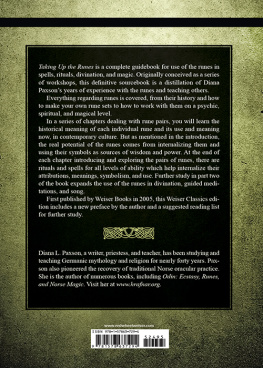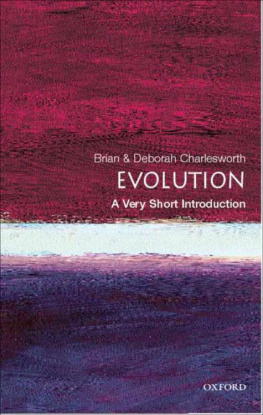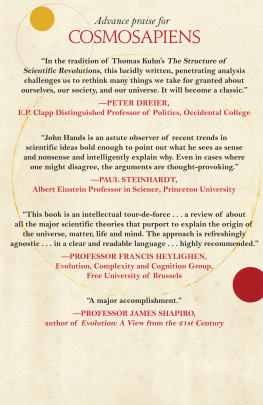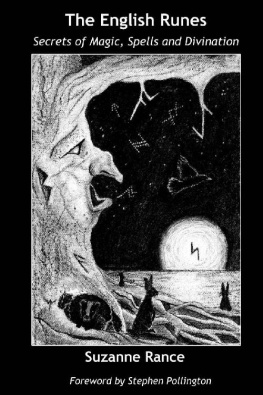
Templeton Press
300 Conshohocken State Road, Suite 500
West Conshohocken, PA 19428
www.templetonpress.org
2015 by Simon Conway Morris
All rights reserved. No part of this book may be used or reproduced,
stored in a retrieval system, or transmitted in any form or by any means,
electronic, mechanical, photocopying, recording, or otherwise,
without the written permission of Templeton Press.
Designed and typeset by Gopa & Ted2, Inc.
Library of Congress Cataloging-in-Publication Data on file
Printed in the United States of America
15 16 17 18 19 10 9 8 7 6 5 4 3 2 1
To the memory of my parents
Bernard of Chartres used to compare us to [puny] dwarfs perched on the shoulders of giants. He pointed out that we can see more and farther than our predecessors, not because we have keener vision or greater height, but because we are lifted up and borne aloft on their gigantic stature.
T HE M ETALOGICON OF J OHN OF S ALISBURY ,
Book III [Translated by D.D. McGarry
(University of California Press; 1962) p. 167]
C ONTENTS
I LLUSTRATIONS
Following page 128
A CKNOWLEDGMENTS
L IKE MANY OTHER THINGS in my life this book needs to start with an apology. Its genesis lay in the generous invitation to deliver the 2007 Gifford Lectures at the University of Edinburgh. As this work grew, however, it became clear that it had diverged from my original theme by too great an extent. It is still my firm intention to publish the Gifford lectures and it is incumbent on me to thank the many people in Edinburghmost especially Wilson Poon, Isabel Roberts and Susan Manningfor this memorable time marked by their many kindnesses. I am in debt to many other people. First is Vivien Brown who has handled manuscript preparation with panache, verveand patience. Next are the Map of Life team, Chlo Cyrus-Kent and Verena Dietrich-Bischoff as well as the web-designer Francis Rowland who collectively not only delivered what I believe is a very effective website (www.mapoflife.com) but drew innumerable facts to my attention. The project was supported generously by the John Templeton Foundation and I warmly thank them for their support. More recently my wits have been sharpened by discussions with Sylvain Gerber, Jen Hoyal-Cuthill, Victoria Ling and Mags Pullen. Then there are those who gave their time to read various sections, especially Rob Asher, Nick Davies, William Foster, Peter Grubb, Chris Howe, David Norman and Nick Strausfield. All offered acute criticisms and by no means agreed with all I said; the faults remain firmly with me. Many others also alerted me to recently published papers, and I especially thank Pablo de Felipe and Ken McNamara. Practically every word written draws on the painstaking work of the invisible college and I hope that the research and conclusions drawn by them are dealt with honestly. In places I use short quotations and these fall under the rubric of fair usage. Librarians across Cambridge assisted the chasing of references and I especially thank Sarah Humbert. Mr R. Garry has also sent me a remarkable range of books and other material. My agent Barbara Levy zealously guarded my interests and offered constant encouragement and support. In addition my brother Roderick kindly provided the translations in the last chapter. Finally I warmly thank my Department and St. Johns College for providing a secure basis where long-term projects can reach some sort of fruition. Finally, as ever, I thank Zo for her love and forbearance even if the conversation seemed to revolve around the number of bottles consumed, ink that is.

I NTRODUCTION
L ONG BOOKS DEMAND short introductions. Yes, another book on evolution, but one with a difference. Not to dispute the realities of evolution, or for that matter the primacy of the Darwinian explanation. Neither would it dream of contesting the self-evident observation that we humans are just one endpoint of, to paraphrase the science fiction writer Brian Aldiss, a 3-billion-year evolutionary spree. But here is a book that is prepared to be heterodox, and not before time. So what is it all about?
Even among the mammals, let alone the entire Tree of Life, humans represent one minute twig of a vast (and largely fossilized) arborescence. So, it would be very poor form were we to demand center stage. Nor is that my intention. Every living species is a linear descendant of an immense string of now-vanished ancestors, but evolution itself is the very reverse of linear. Rather it is endlessly exploratory, probing the vast spaces of biological hyperspace. Indeed this book is a celebration of how our world is (and was) populated by a riot of forms, a coruscating tapestry of life.
But only humans understand this, and so while there is no narrative of human origins, no Monad to Man, threaded through this book are some of the staging posts that led from a eukaryotic cell to animals, including fish that clambered onto land, furry reptiles that transformed into mammals, and in one branch evolved into primates, great apes, and ultimately ourselves. If from unicell to human every generation is taken as a stepping-stone then they would total billions. Even a tally of really key steps as to how the first eukaryote evolved into the biological form writing these lines would run into the hundreds, if not the thousands. We need to be selective, and while far from imagining this list to be exhaustive, among the most significant might be: multicellularity,), placentas (and even a penis), agriculture, and sleep might be less obvious but in one way or another each was biologically seismic. All are part of a much longer list that collectively entails becoming human. They have, however, a wider significance. Each of the features just listed is an essential component in a much broader argument that forms the core of this book. Each and every one of them is either demonstrably convergent or inherent in terms of prior history, that is, drawing on building blocks that have already evolved (and as often as not for a quite separate purpose).
Of these two concepts, evolutionary convergence is the more familiar. It is the otherwise uncontroversial observation that from very different starting points in the Tree of Life very much the same solution has evolved multiple times. Did you know, for example,
In this book, however, the net been thrown much wider than before, and as a consequence a whole series of neglected evolutionary questions arise. Some are remarkably general. Why, for example, are convergences such as parasitism, carnivory, and nitrogen fixation in plants concentrated in particular taxonomic hot spots? Why do certain groups have a particular propensity to evolve toward particular states? Another chestnut involves what is referred to as deep homology. If the underlying genetic mechanisms (such as the famous example of the paired-box gene Pax6 in eyes) are the same in quite different groups, then how can it be legitimate to speak of convergence? The reality is rather different and points to some much more interesting principles. Other questions are more specific but lead to unexpected evolutionary insights. If bees sleep (as they do), do they dream? Why is that insect copulating with an orchid? Why have sponges evolved a system of fiber optics? What do mantis-shrimps and submarines have in common? If mosasaurs had not gone extinct, what would have happened next? Will a saber-toothed cat ever reevolve?
With this blizzard of questions we must trust to Ariadnes thread as we pace the labyrinths of this book. Yet not only is the journey punctuated by regular shafts of light but as importantly the local, even the anecdotal, melds into the general. Like a tapestry one has to stand back to see how the figures and buildings are set in a wider landscape where the recurrent themes of the narrative reveal the deeper patterns of evolution. If we are going to start this journey, then where better than in a restaurant and out in the Venetian lagoon? Episodes in the lagoon open and close this book, but at the beginning it is my shadowy colleague Mortimer who, turning from his wine, exclaims Consider the octopus! What better starting point? Of course, with its camera eyes the octopus is a totem of convergent evolution, but most intriguing are the cognitive convergences that, toward the end of this book, open dramatic new territory.
Next page
